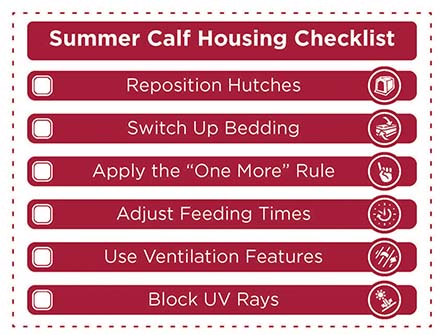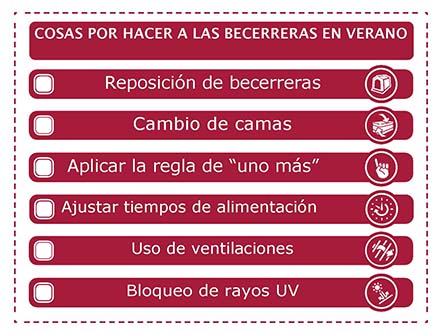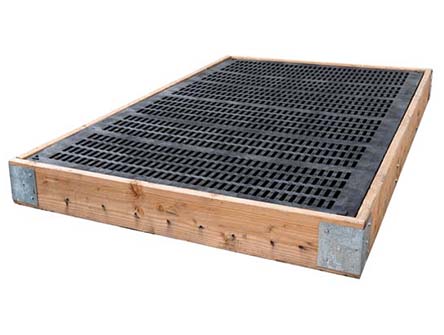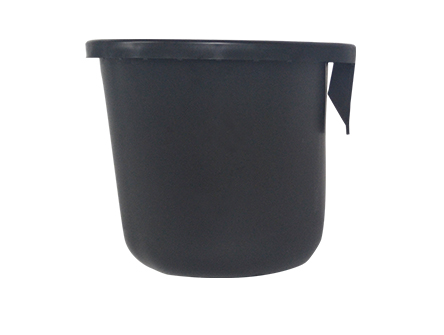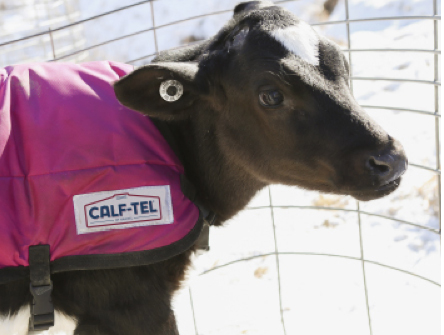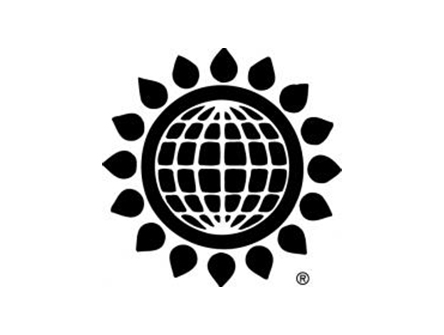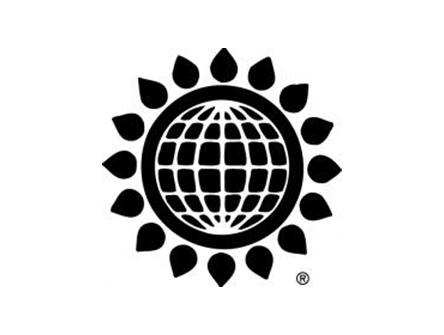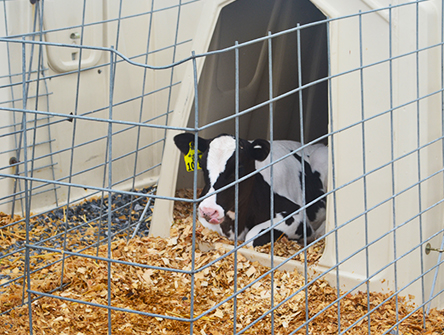The sun is shining, and winter is a distant memory. You may be eager to spend time in the field and catch up on tasks you couldn’t do all winter. But during this busy time, don’t forget how warmer weather is impacting your calves.
Make sure preparing calves for heat stress is on the top of your to-do list.
Calves can start to experience heat stress at just 68ºF, leading to reduced feed intake, increased energy needs and higher susceptibility to disease.
Doing the little things before heat stress hits is a cost-efficient way to lessen the impacts of heat stress, or even prevent it from occurring. Use this heat stress checklist to brush up on the basics and keep calves comfortable all summer long:

Reposition hutches
Air movement is critical to help prevent heat stress in calves. Maximize airflow by repositioning hutches to face into the prevailing wind, and move them away from permanent wind-blocking structures like silos, barns or bunkers.
Hot temperatures and increased fieldwork can cause a lot of summer dust. Make sure hutches are located away from hay barns or fields to prevent dust from irritating your calves’ respiratory systems and settling into water and milk buckets.
Switch up bedding
Straw is the go-to bedding in winter because its long particle size keeps calves warm, but it’s not ideal when temperatures rise. Small particle bedding, like peanut hulls, rice hulls or wood shavings, has less heat retention. Use small particle bedding during high temperatures to encourage lying time and keep calves comfortable.
Sand is another good summer bedding option, but it can heat up in the sun. Keep calves cool by facing hutches north or using a shade cloth to keep the sun off the sand.
Apply the ‘one more’ rule
Summer weather calls for extra calf attention. Whatever feeding and management tasks you typically complete during milder spring temperatures, do that task one more time each day in summer. The “one more” rule particularly applies to feeding water and observing calves.
Heat stress can lead to dehydration, which can lead to decreased calf performance, so extra, fresh clean water is critical. Water calves one more time, in addition to regular water feedings, when temperatures reach 68ºF or above.
The one more rule also applies to calf observations. Add an extra walk-through of the calf hutches or pens to check for heat stress signs. Calves experiencing heat stress sit and pant, have sunken eyes, a droopy head and dry nose. By increasing observations, you can catch these signs early and help prevent long-term impacts of heat stress.
Adjust feeding times
Decreased feed intake is a common challenge in warm temperatures. Adjust morning and night feeding times to deliver feed during the cooler parts of the day. Calves will eat more, and feed stays cooler, which prevents spoilage.
Pay attention to how much starter calves are eating. A slight drop in starter intake is normal in warm weather, but a significant decrease could indicate heat stress. Consider adding a daily electrolyte feeding, in addition to milk or milk replacer, to help prevent heat stress and keep feed intake up.
Use ventilation features
Hutches have ventilation features for a reason. They encourage airflow and help hot air escape to help prevent heat stress. Make sure you’re using ventilation features day and night early in the summer before heat stress kicks in.
Open rear bedding doors to maximize air movement through the hutch. Rear vents and ridge vents offer additional opportunities for air movement. Open all the vents to let air through when it’s hot. If opening the ventilation features still doesn’t provide enough air movement, consider raising the back of the hutch with a cinderblock.
Ventilation is also critical for calves housed indoors. Make sure there’s natural airflow. If there’s not a natural airflow, create one with fans, curtains and open doors. Some indoor pen systems allow you to remove the solid back panel and swap it for a wire-meshed panel to increase airflow.
Block UV rays
Ultraviolet (UV) rays destroy plastic quality and are harmful to calves. But since you can’t see them, how do you know your calves are protected? Test the quality of your hutch material by shining a flashlight through the plastic into the hutch during the day. If the light is coming through, UV rays can also get through.
If your plastic quality isn’t up to par, consider upgrading to a hutch with UV protection to keep calves cool and improve hutch longevity. Additional shade features, such as installing a shade cloth or building a pole barn over your hutches, can also help protect against UV rays.
Heat stress happens every year, but focusing on the little details can help lessen the impacts. By following the proper steps, your calves will be comfortable and cool all summer long.
